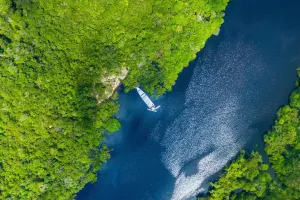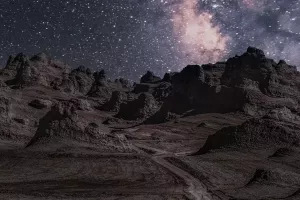A lake is a natural complex comprised of a lake basin, lake water, and the substances contained within the water, all of which participate in the natural cycle of matter and energy.
Among these elements, substances contained in water refer to minerals, dissolved substances, organic matter, and aquatic organisms.
Technically, a lake should have water more than 6 meters deep, with any water less than 6 meters deep considered a wetland. Lakes are not static objects. They are dynamic complexes that continuously carry out material and energy circulation in nature. They are intricately connected and interact with human activities and survival.
There are many reasons for the formation of lakes, such as crustal movements, natural erosion, accumulation, and human activities. These factors can create depressions in the surface, which then accumulate water to form lakes.
Generally speaking, the origin of lakes can be classified into the following types:
1. Structural Lake: Structural lakes form in tectonic basins created by the action of internal crustal forces. They are characterized by their long and narrow shapes and clear water depths. Examples include Lake Malawi, Lake Tanganyika, and Lake Victoria along the famous East African Rift Valley.
2. Crater Lake: Crater lakes are formed in volcanic craters and have circular or oval shapes. They often have steep shores and unfathomable depths.
3. Barrier Lake: Barrier lakes form when volcanic eruptions, earthquakes, landslides, or glaciers block riverbeds, thereby obstructing the flow and creating a lake in the upper reaches of the water.
In addition to classifying lakes based on their formation, lakes can also be categorized based on their salt content. Lakes can be divided into freshwater lakes and saltwater lakes based on the salt content of their water. Freshwater lakes typically have a salt content below 1%, while saltwater lakes have a salt content higher than 1%. As salinity increases, the lake becomes saltier.
In humid areas, it is rare for lakes to accumulate water without an outlet due to continual inflow and outflow. Saltwater lakes are more likely to form in arid regions where evaporation rates exceed inflow, leading to salt accumulation.
Some of the saltiest lakes in the world are found in Western Asia and North Africa. Lake Assal in Djibouti, Africa, boasts a salinity of 34%, while the Dead Sea in the Middle East has a salinity exceeding 30%, making it about 10 times saltier than normal seawater.
Comprehending the diverse types of lakes and their characteristics enriches our appreciation of these vital ecosystems and their importance in the global ecology.


